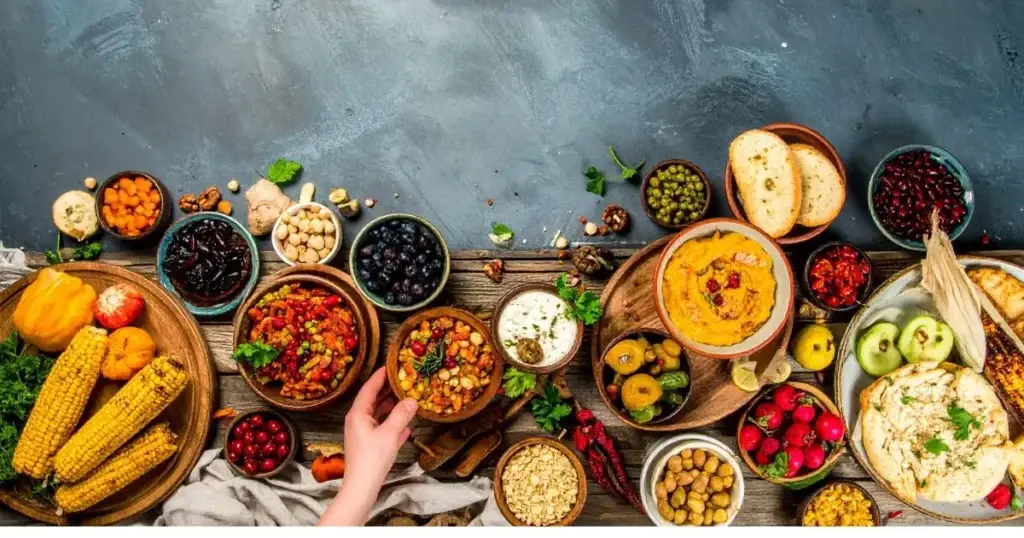Table of Contents
26 Native American Foods : A Journey Through Indigenous Cuisine
Rediscovering the Roots of American Flavor
Have you ever wondered what flavors shaped the land long before modern kitchens and fast food? Exploring Native American foods is more than just a culinary adventure—it’s a way to connect with the original stewards of North America and experience the deep roots of American cuisine. When you taste these dishes, you’re not just enjoying a meal; you’re honoring centuries of tradition, resilience, and creativity. Whether you’re a food lover, a history buff, or simply curious, these 26 Native American foods you should try at least once will open your eyes and palate to a world of flavor and meaning.
The Rich Heritage of Native American Cuisine
Diversity Across Tribes
Native American cuisine is as diverse as the land itself. Each tribe, from the Navajo in the Southwest to the Ojibwe in the Great Lakes, has its own unique food traditions, ingredients, and cooking methods. You’ll find that what’s common in one region might be completely new in another.
- Navajo: Known for frybread and mutton stew.
- Iroquois: Famous for the Three Sisters—corn, beans, and squash.
- Pacific Northwest Tribes: Renowned for salmon and wild berries.
- Plains Tribes: Bison, wild game, and pemmican are staples.
Sustainable and Local
Indigenous foodways are rooted in sustainability. Native peoples have always relied on what the land provides, using local, seasonal, and wild ingredients. This approach not only preserves the environment but also ensures that every meal is fresh and nourishing.
Cultural Significance
For Native Americans, food is more than fuel. It’s a part of ceremonies, celebrations, and daily life. Cooking customs travel through families, often woven with memorable tales and rituals. When you try these foods, you’re participating in a living tradition.

26 Native American Foods You Should Try at Least Once
Ready to expand your culinary horizons? Here’s a list of 26 Native American foods you should try at least once, each with its own story and flavor profile.
Iconic Dishes and Ingredients Table
| Food/Dish | Region/Tribe | Key Ingredients | Description/Notes |
|---|---|---|---|
| Frybread | Navajo, Plains | Flour, lard, baking powder | Crispy, chewy flatbread |
| Three Sisters Stew | Iroquois, Cherokee | Corn, beans, squash | Hearty, plant-based stew |
| Pemmican | Plains, Cree | Dried meat, berries, fat | High-energy preserved food |
| Wild Rice | Ojibwe, Great Lakes | Wild rice, waterfowl | Nutty, earthy grain dish |
| Acorn Mush | California Tribes | Acorn meal, water | Creamy, porridge-like |
| Blue Corn Mush | Hopi, Pueblo | Blue cornmeal, juniper ash | Traditional breakfast porridge |
| Salmon Bake | Pacific Northwest | Salmon, cedar, herbs | Roasted over open fire |
| Bison/Buffalo Roast | Plains Tribes | Bison, herbs | Slow-roasted, lean meat |
| Wojapi | Lakota, Dakota | Berries, honey | Sweet berry sauce |
| Indian Tacos | Various | Frybread, beans, meat, toppings | Fusion of old and new |
| Sopaipillas | Southwest | Dough, honey | Puffy fried bread, often sweet |
| Venison Stew | Northeast, Plains | Venison, root veggies | Hearty, gamey stew |
| Cedar Plank Fish | Pacific Northwest | Fish, cedar, herbs | Wood-smoked, aromatic |
| Chokecherry Pudding | Plains, Dakota | Chokecherries, sugar | Tart, sweet dessert |
| Hominy | Southeast, Southwest | Corn, lime | Treated corn, used in soups |
| Posole | Pueblo, Southwest | Hominy, pork, chiles | Spicy, comforting stew |
| Maple Syrup | Northeast, Great Lakes | Maple sap | Natural sweetener |
| Bannock | Various | Flour, fat, baking powder | Simple, pan-fried bread |
| Green Chile Stew | Southwest | Green chiles, pork | Spicy, warming dish |
| Pine Nut Soup | Southwest, Great Basin | Pine nuts, broth | Rich, nutty flavor |
| Smoked Whitefish | Great Lakes, Northeast | Whitefish, smoke | Delicate, smoky fish |
| Sunchoke Soup | Northeast, Midwest | Sunchokes, broth | Earthy, creamy soup |
| Amaranth Porridge | Southwest, Mexico | Amaranth, water, honey | Ancient grain breakfast |
| Prickly Pear Jelly | Southwest | Prickly pear fruit, sugar | Bright, tangy spread |
| Wild Berry Jam | Various | Wild berries, sugar | Sweet, tart preserve |
| Sumac Lemonade | Northeast, Midwest | Sumac berries, water, sweetener | Refreshing, tart drink |
Traditional Native American Ingredients You Should Know
Understanding the building blocks of Native American cuisine will help you appreciate each dish even more. Here are some of the most important ingredients you’ll encounter:
- Corn (Maize): The backbone of many indigenous diets, used in everything from bread to stews.
- Beans: A vital source of protein, often paired with corn and squash.
- Squash: Adds sweetness and texture, completing the “Three Sisters” trio.
- Wild Game: Bison, venison, rabbit, and other meats provide lean protein.
- Fish and Seafood: Salmon, trout, and shellfish are staples in coastal and river regions.
- Foraged Foods: like berries, nuts, wild greens, and roots enhance both variety and nutrition.
Nutritional Benefits
Foods traditionally consumed by Native Americans are inherently packed with essential nutrients. For instance, wild rice boasts a high protein and fiber content, while squash is abundant in vitamins. These ingredients are not only delicious but also support a healthy lifestyle.

How to Prepare Classic Native American Recipes at Home
You don’t need to be a professional chef to enjoy these flavors in your own kitchen. Here’s an easy recipe to begin your culinary journey:
Sample Recipe Table: Three Sisters Stew
| Ingredient | Quantity | Notes |
|---|---|---|
| Corn kernels | 2 cups | Fresh or frozen |
| Beans (any type) | 2 cups | Cooked |
| Squash (diced) | 2 cups | Butternut or acorn |
| Onion (chopped) | 1 medium | |
| Garlic (minced) | 2 cloves | |
| Vegetable broth | 4 cups | |
| Salt & pepper | To taste | |
| Fresh herbs | 1/4 cup | Optional, for garnish |
Step-by-Step Instructions
- In a sizable pot, cook the onion and garlic until they release their aroma.
- Add the diced squash and cook it for a few minutes until it begins to become tender.
- Stir in the corn, beans, and vegetable broth.
- Allow the mixture to simmer gently for 20 to 30 minutes, or until all the vegetables are tender.
- Add a pinch of salt and pepper, and toss in some herbs for extra flavor if you like.
Tips for Sourcing Authentic Ingredients
- Check local farmers’ markets for fresh produce.
- Look for Native-owned food brands online.
- Substitute with similar ingredients if you can’t find the originals.
Modern Adaptations
Don’t hesitate to personalize these recipes with your own flair. Use what’s available in your area, and experiment with flavors that suit your taste.
The Cultural Importance of Native American Foods
Ceremonial Dishes
Many Native American foods are tied to rituals and celebrations. For example, frybread is often served at powwows, while wild rice might be featured at harvest festivals.
Storytelling Through Food
Recipes serve as more than mere guidelines; they are narratives that have been shared through generations. When you cook and share these dishes, you’re helping to keep those stories alive.
Revival and Food Sovereignty
There’s a growing movement among Native communities to reclaim traditional foodways. This includes growing ancestral crops, reviving old recipes, and teaching younger generations about indigenous food traditions.

Where to Find and Try Native American Foods Today
You don’t need to venture far to savor these tastes. Here’s how you can find Native American foods near you:
Restaurants and Cafés
- Seek out indigenous-owned eateries in your area.
- Look for pop-up events or food trucks specializing in Native cuisine.
Festivals and Powwows
- Attend local powwows or cultural festivals, where traditional foods are often served.
- Check community calendars for upcoming events.
Markets and Online Stores
- Shop at farmers’ markets for wild rice, berries, and other ingredients.
- Check out online stores operated by Native entrepreneurs for unique products.
Tips for Respectful Engagement
- Approach Native foods with curiosity and respect.
- Support Native-owned businesses whenever possible.
- Explore the origins and cultural value behind each meal you experience.
FAQs Regarding 26 Native American Dishes You Should Experience at Least Once
What are the most popular Native American foods?
Some of the most beloved dishes include frybread, Three Sisters stew, wild rice, and bison roast. Each region has its own favorites, so you’ll find plenty of variety.
Are these dishes still eaten today?
Absolutely! Numerous Native American dishes continue to be cherished in households and gatherings nationwide. There’s also a renewed interest in traditional recipes and ingredients.
How can I cook Native American recipes at home?
Start with simple dishes like Three Sisters stew or frybread. Select ingredients from local sources and don’t shy away from trying new combinations.
Where can I buy authentic ingredients for Native American dishes?
Look for Native-owned markets, farmers’ markets, or online stores that specialize in indigenous foods.
What does the “Three Sisters” represent in Native American cooking?
Corn, beans, and squash—known as the “Three Sisters”—represent more than just staple foods; they embody tradition and unity. They represent a sustainable way of farming and a symbol of community and cooperation.
Are Native American foods healthy?
Traditional Native American foods are naturally nutritious, featuring whole grains, lean proteins, and plenty of vegetables. They’re a great choice for anyone looking to eat well.
Conclusion: Celebrating the Tastes and Narratives of Native American Cuisine
Exploring these 26 Native American foods you should try at least once is about more than just satisfying your appetite. This practice pays tribute to the land, its people, and the customs that have influenced American culinary traditions for centuries. By tasting and learning about these dishes, you’re helping to keep their stories alive and supporting a vibrant, living heritage.
So, why not start your own journey today? Try a new recipe, visit a Native-owned restaurant, or share a meal with friends and family. Every bite is a step closer to understanding and appreciating the rich tapestry of Native American cuisine.
Have you tried any of these Native American foods? We encourage you to share your opinions, favorite recipes, or questions in the comments below. Let’s celebrate and learn together!
Have You Given This Recipe A Try?
There are no reviews yet. Be the first one to write one.

